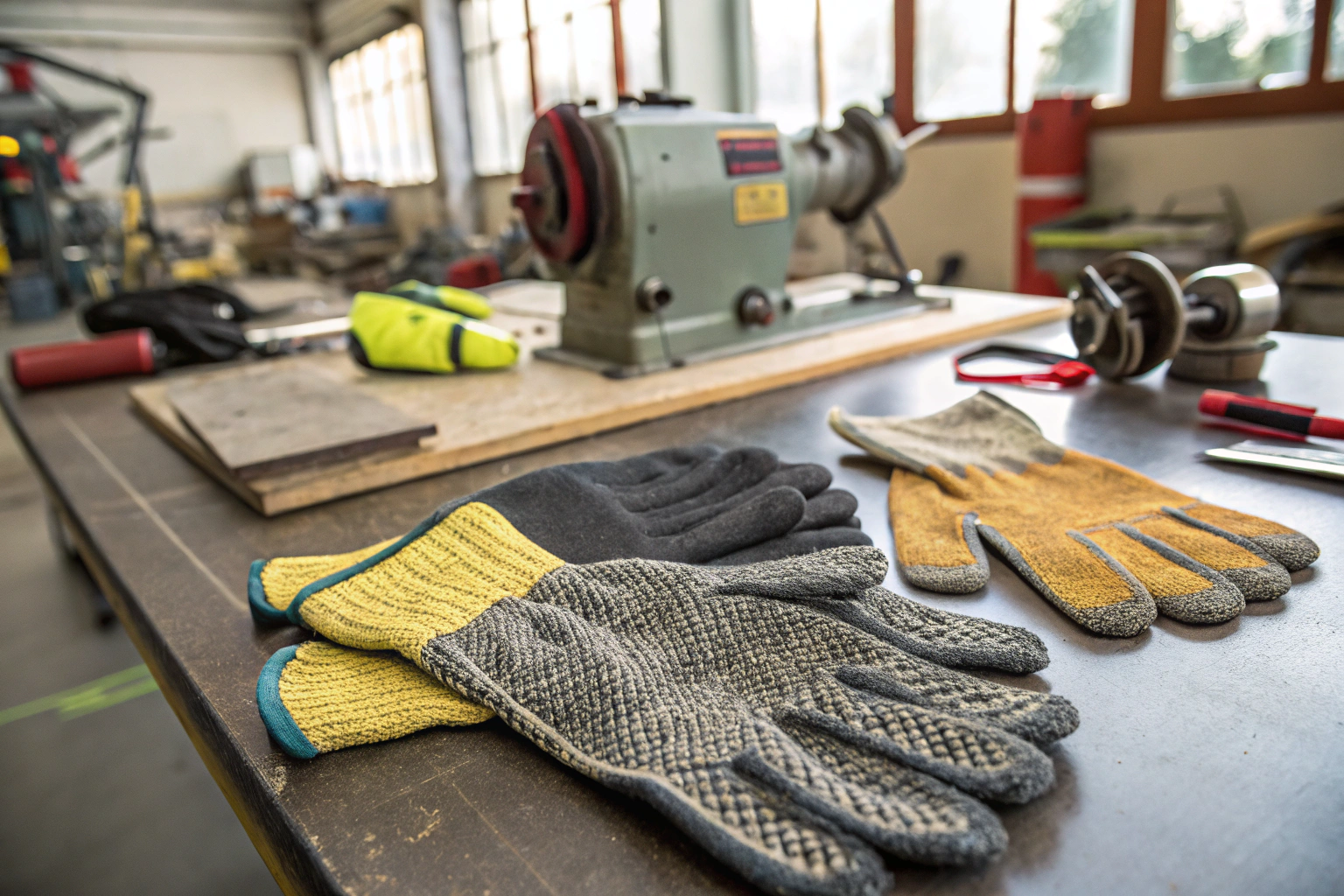Cut-resistant gloves are a critical part of personal protective equipment (PPE) in manufacturing, construction, and industrial environments. If you have ever handled sharp tools, sheet metal, or glass, you know the stakes—one slip can lead to serious injury. ASTM F2668 is the standardized test method for measuring the cutting resistance of materials used in protective clothing, giving buyers a reliable benchmark for selecting the right gloves.
In short, ASTM F2668-tested gloves use materials like Kevlar, high-performance polyethylene (HPPE), stainless steel mesh, and advanced composite yarns to deliver dependable cut resistance without sacrificing comfort. These gloves are engineered to protect workers while maintaining dexterity and meeting strict safety regulations.
When you are sourcing cut-resistant gloves, especially from overseas suppliers, understanding the test standard and material differences can save you from costly mistakes, compliance failures, or worker injuries. Below, I’ll break down the best materials and how they perform under ASTM F2668 testing.
Kevlar vs. HPPE: Which Performs Better in ASTM F2668?
Kevlar, developed by DuPont, is an aramid fiber known for its outstanding cut resistance, heat stability, and lightweight nature. HPPE (high-performance polyethylene), often branded as Dyneema or Spectra, is known for its exceptional strength-to-weight ratio and cool feel against the skin. Under ASTM F2668, both materials perform well, but their advantages differ.
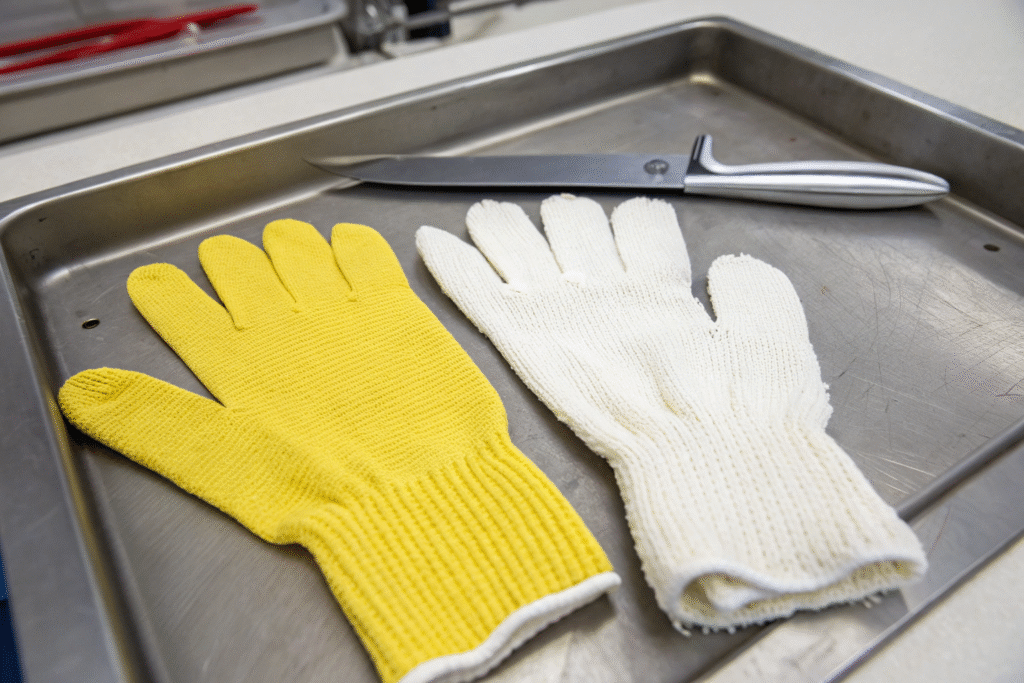
How Does Kevlar Handle Extreme Cutting Tests?
Kevlar resists both straight and slashing cuts, maintaining integrity even when exposed to high heat. This makes it a preferred choice in metal fabrication and glass handling. According to DuPont’s official Kevlar PPE page, the fiber can withstand temperatures up to 800°F without significant degradation. Its tensile strength helps prevent glove failure during prolonged use.
Is HPPE a Better Option for Comfort and Durability?
HPPE offers similar cut protection levels as Kevlar but with a smoother texture and lower thermal conductivity, meaning it feels cooler on the skin. Brands like Dyneema highlight its long-lasting durability and resistance to chemicals. In ASTM F2668 testing, HPPE often ranks at similar cut indices to Kevlar but is chosen when wearer comfort is a top priority.
Why Stainless Steel Mesh Gloves Still Dominate Certain Industries
When you think of maximum cut resistance, stainless steel mesh often comes to mind. These gloves are literally made from interlinked steel rings, making them nearly impervious to blade penetration.
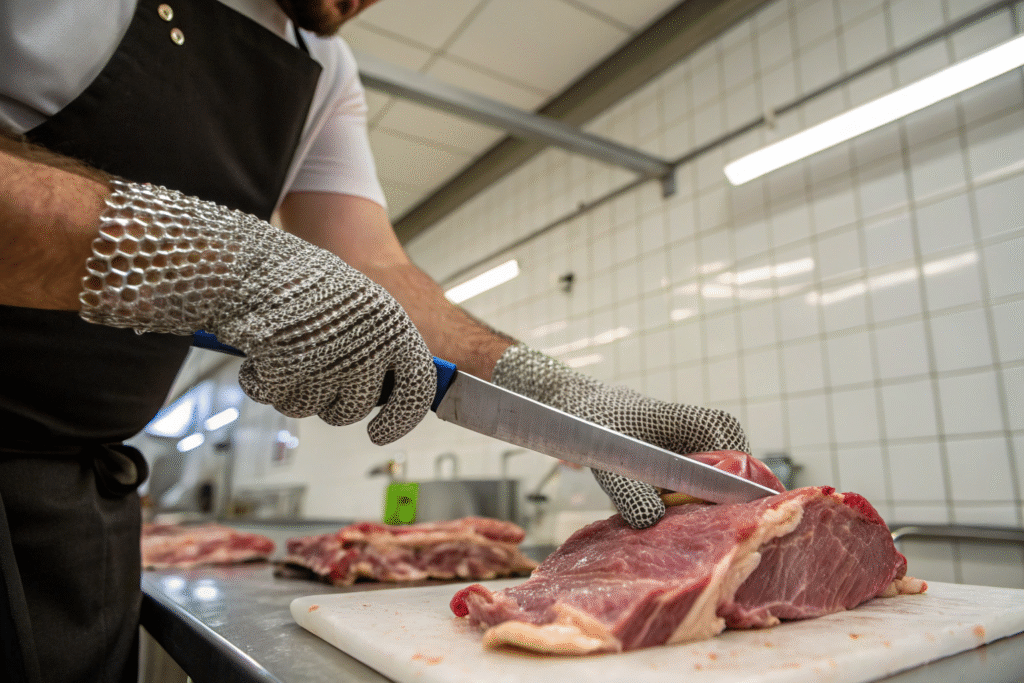
Are Steel Mesh Gloves the Most Reliable for Butchery and Food Processing?
In environments like meatpacking, where workers use razor-sharp knives all day, steel mesh gloves provide unmatched cut protection. The Ansell stainless steel mesh glove line is a common choice for USDA-compliant facilities. ASTM F2668 testing consistently places these gloves at the highest cut resistance levels.
What Are the Drawbacks of Steel Mesh Gloves?
While unbeatable in cut resistance, steel mesh gloves are heavy and less flexible than fiber-based gloves. They also require strict hygiene protocols to prevent bacterial growth. According to Food Safety Magazine, regular sanitizing and inspection are critical to maintaining their performance and safety.
How Composite Yarn Technology Enhances Cut Resistance
s.
Composite yarns combine multiple materials—often Kevlar, HPPE, glass fibers, or stainless steel filaments—into a single glove fabric. This hybrid approach allows manufacturers to fine-tune cut resistance, comfort, and flexibility.
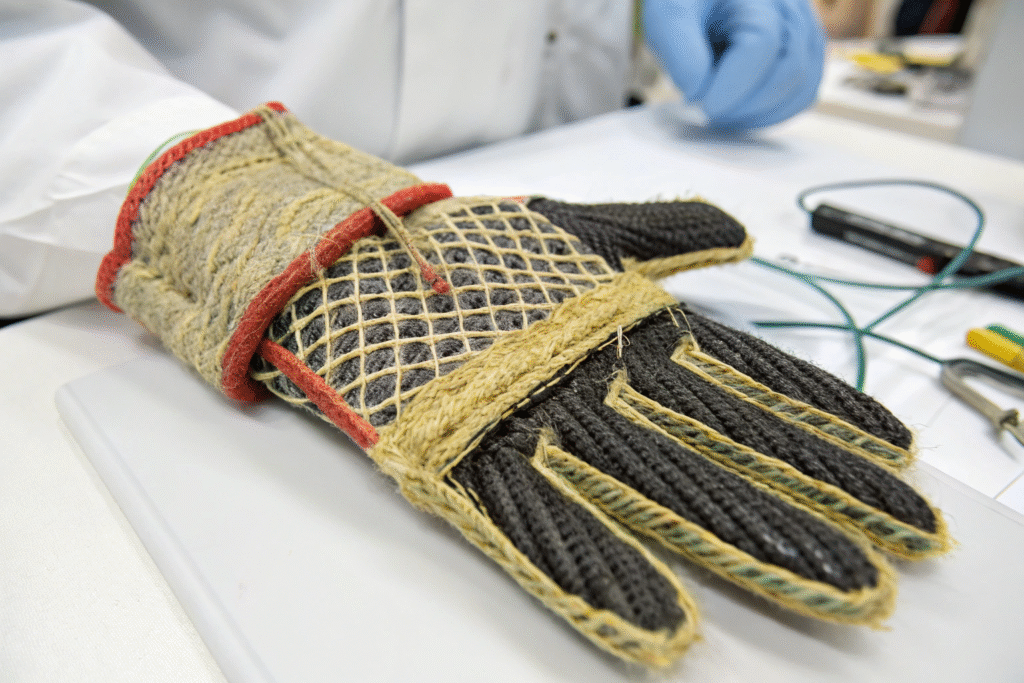
Why Are Composite Yarns Popular in Industrial PPE?
Composite gloves can exceed the cut resistance of single-material gloves while remaining lighter and more flexible than all-steel mesh. For example, HexArmor’s composite gloves often outperform pure Kevlar or HPPE in ASTM F2668 tests due to the reinforcing steel or glass fiber cores.
How Do They Balance Protection and Comfort?
By blending hard and soft fibers, composite yarn gloves can provide both high cut ratings and ergonomic fit. According to OSHA PPE guidelines, comfort is a major factor in ensuring workers actually wear protective gear consistently.
Which Material Should You Choose for Your Industry?
Selecting the right glove material depends on your industry’s hazards, worker comfort needs, and budget. ASTM F2668 test results give you a data-driven basis for comparing options.
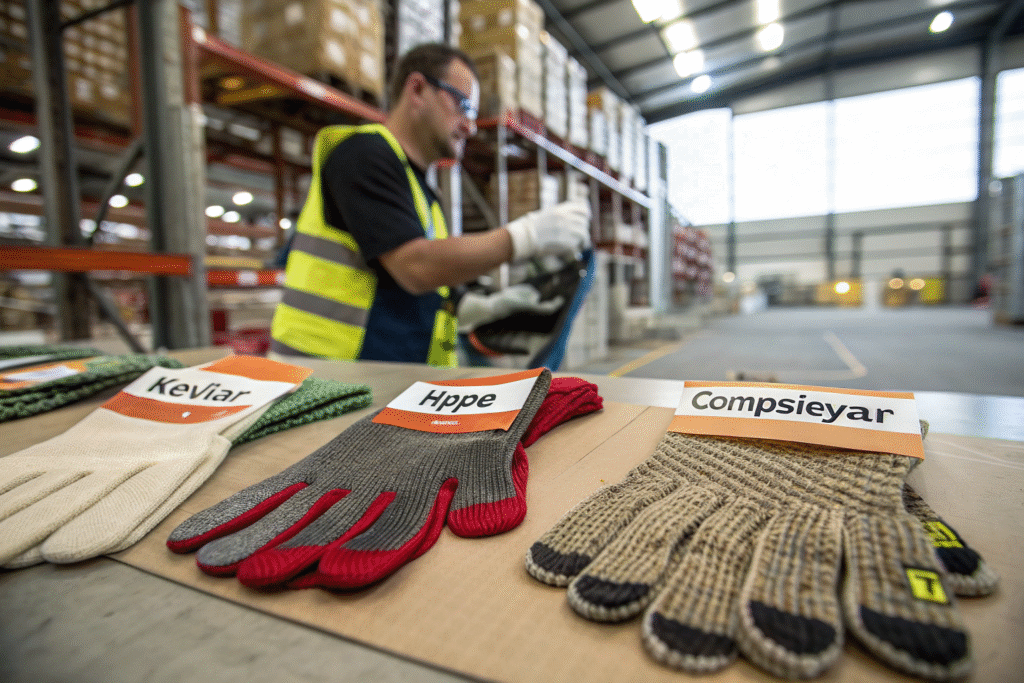
Should You Always Choose the Highest Cut Level?
Not necessarily. Over-specifying can lead to unnecessary costs and reduced comfort. For example, ISEA’s cut protection guide recommends matching cut level to the actual risk, rather than defaulting to the maximum.
What’s the Smartest Buying Strategy?
Request ASTM F2668 test reports from your supplier and compare cut indices. Look for gloves from trusted brands or certified manufacturers. For global sourcing, ensure compliance with both ASTM and EN 388 standards to avoid regulatory issues. The American National Standards Institute offers resources to verify PPE compliance.
Conclusion
Choosing the best ASTM F2668-tested cut-resistant glove material is about finding the right balance between protection, comfort, and cost. Kevlar and HPPE remain leading options for most industrial applications, while stainless steel mesh dominates in high-risk cutting environments like butchery. Composite yarns are a rising choice, blending strength and wearability.
If you are sourcing PPE globally and want consistent quality with competitive pricing, Shanghai Fumao can help. We work with certified factories to supply cut-resistant gloves and other safety textiles that meet ASTM and EN standards. Contact our Business Director Elaine at elaine@fumaoclothing.com to start your order.

